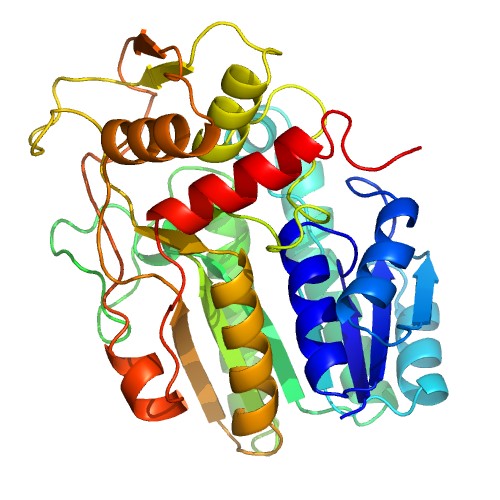Custom MemPro™ Transmembrane Proteins with NAD(P)-binding Rossmann-fold Domains
Creative Biostructure has developed custom MemPro™ gene-to-structure services for transmembrane proteins with NAD (P)-binding Rossmann-fold domains. Transmembrane proteins with NAD (P)-binding Rossmann-fold domains are a protein superfamily consisting of two families: flavin-containing amine oxidoreductase and tyrosine-dependent oxidoreductases.
The members of flavin-containing amine oxidoreductase family are amine oxidases, such as alpha-glycerophosphate oxidase (GlpO), monoamine oxidase A (RattusNorvegicus, Homo Sapiens), monoamine oxidase B (dimer/monomer, Homo Sapiens) and protoporphyrinogen oxidase (Nicotiana Tabacum, Homo Sapiens, Myxococcus Xanthus). They are involved in the metabolism of amine. The tyrosine-dependent oxidoreductases family, also known as the short-chain dehydrogenases/reductases (SDR) family, includes corticosteroid 11-beta-dehydrogenase, isozyme 1 (MusMusculus, Homo Sapiens, Cavia Porcellus), pteridine reductase 1 (Leishmania Tarentolae), sorbitol dehydrogenase (Rhodobacter Sphaeroides) and tropinone reductase 2 (Datura Stramonium).

Figure. Tyrosine-dependent oxidoreductases
Flavin-containing amine oxidoreductase family mainly includes L-amino acid oxidases (LAO), polyamine oxidase (PAO) and various monoamine oxidases (MAO). LAO has been isolated and characterized from several snake venoms. It is a component in snake venoms, along with von Willebrand factor-cleaving metalloproteinase and phospholipase A, affecting hemostasis and thrombosis, which is one of the reasons that snakebites by monocellate cobra causes neurological and neuromuscular disorder. LAOs in venom are usually FAD-binding glycoproteins, it may inhibit platelet aggregation, induce apoptosis and hemorrhagic. Moreover, the presence of LAOs in mouse milk has antibacterial effects. PAO is a hydrogen peroxide-producing enzyme and it is involved in the terminal catabolism of polyamines. It exits in many monocots, such as maize, barley and millet, etc. PAO in mammalian organism catalyzes the oxidative cleavage of N1-acetyl-polyamines to form putrescine and spermidine plus monoacetylpropionaldehyde. MAOs are integral proteins located in the outer mitochondrial membrane. Based on different substrate preferences and inhibitor sensitivities, MAOs have two types of activity, MAO-A and MAO-B. MAO-A is sensitive to low clorgyline concentrations and active against norepinephrine and serotonin, while MAO-B has high activity against benzylamine and phenylethylamine.
Short-chain dehydrogenases/reductases (SDRs) constitute a subfamily of transmembrane proteins with NAD (P)-binding Rossmann-fold domains. This family consists of about 140 different enzymes presently. The common structural feature of SDRs is the Rossmann-fold scaffold which can bind NAD (P) dinucleotides. Most SDRs have a Tyr-based catalytic center. They all have critical roles in amino acid, carbohydrate, lipid, hormone and xenobiotic metabolism.
Creative Biostructure can provide custom MemPro™ gene-to-structure services for membrane proteins Gene-to-Structure services.
Federico R, et al. Characterization of maize polyamine oxidase. Phytochemistry. 1990; 29(8):2411-4.
K. L. Kavanagh, et al. The SDR superfamily: functional and structural diversity within a family of metabolic and regulatory enzymes. Cell Mol Life Sci. 2008 Dec; 65(24):3895-906.
